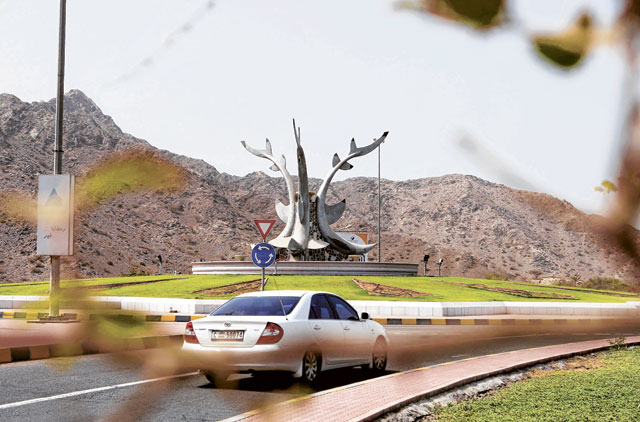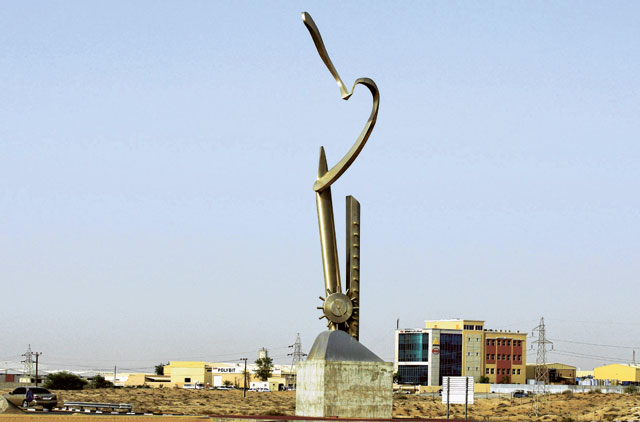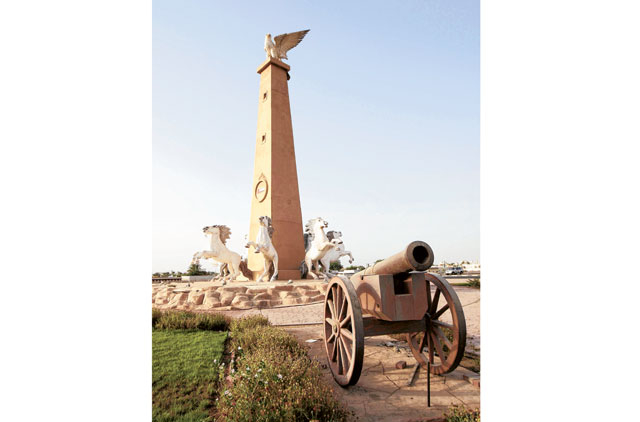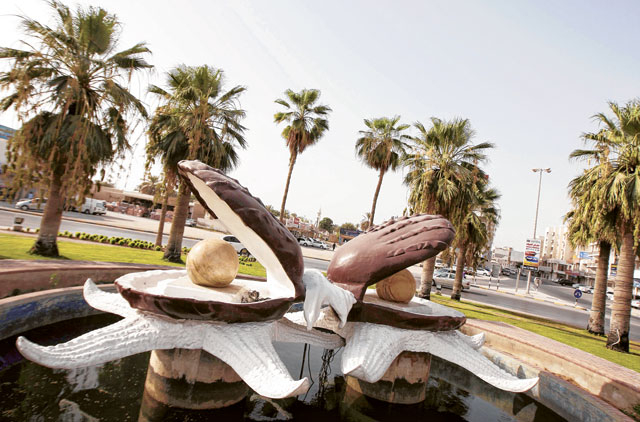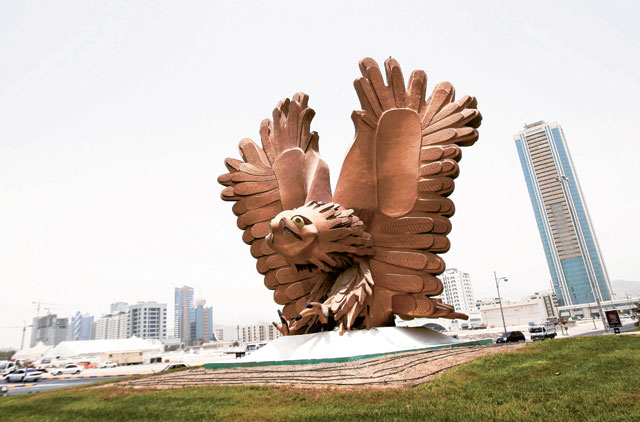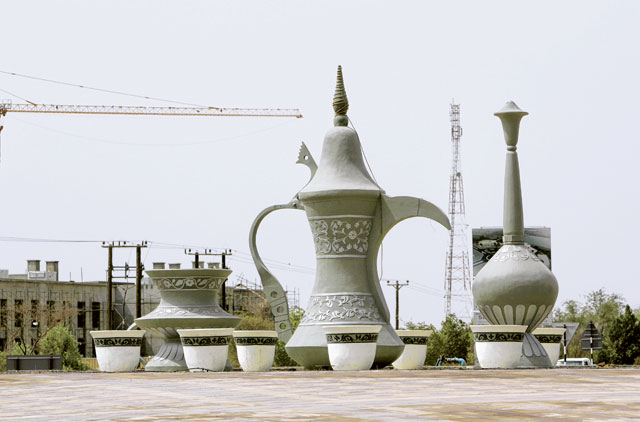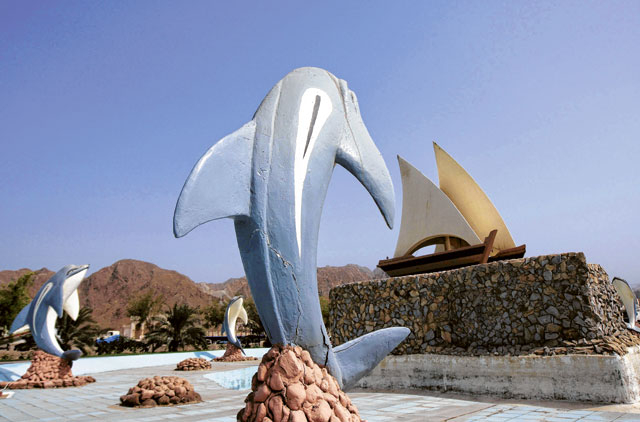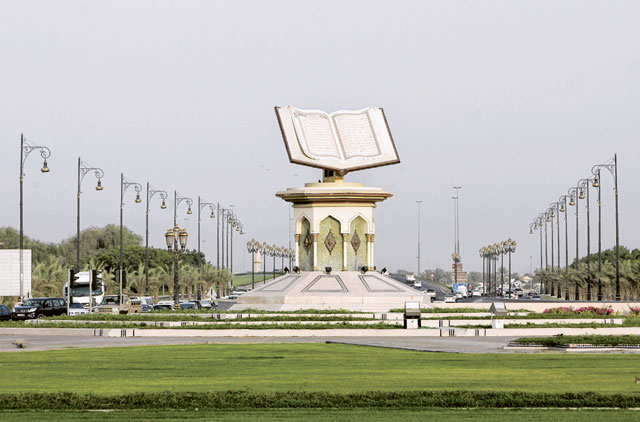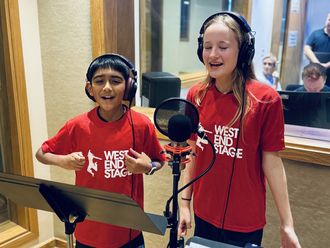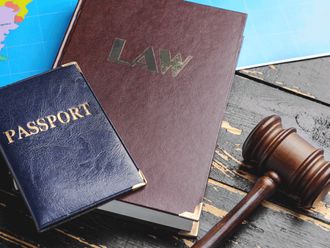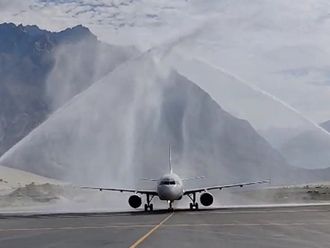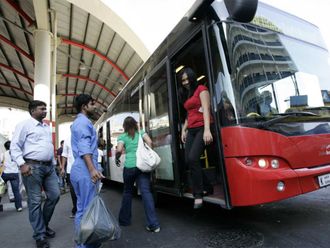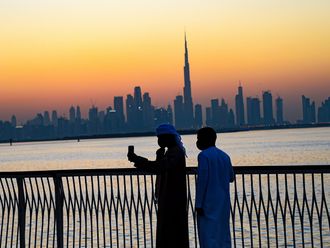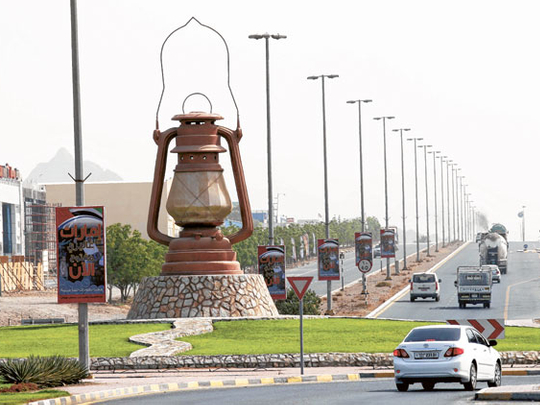
Dubai: For decades roundabouts have been a common sight on the UAE roads. Ranging from elaborate sculptures, animal figures, culturally significant monuments and quirky shapes, they have brightened up an otherwise monotonous journey or a dull commute to work.
Mention the Clock Tower Roundabout, the Coffee Pot Roundabout, the Pearl Roundabout, Shark Roundabout or the Kuwait Roundabout and people immediately know which town you are talking about.
However, due to the high volume of traffic on the UAE roads, they are being phased out to make way for more efficient flyovers.
Most roundabouts in the UAE were introduced from the 1950s and were based on Britain's traffic system. They were built for safety, environment and aesthetic reasons.
Al Ain, the birth place of the late Shaikh Zayed Bin Sultan Al Nahyan, is home to a number of roundabouts because the early pattern of road networks were basic and ran from east to west and north to south said Al Ain City Municipality Urban Planning Director Talal Abdullah Al Salmani.
Congestion
Most of those roads are dual, two or three lanes carriage ways, which required safe traffic junctions. "The roundabout was the answer," he said.
"There was low traffic volume and of course there was no congestion at that time and therefore there was no need for signalised junctions. And that was the start. Shaikh Zayed led the efforts to turn this harsh environment to be a real garden city with parks, gardens, and landscaped streets and roundabouts."
Under Shaikh Zayed's direction, the roundabouts were considered a potential for landscaping themes and public art and they were part of the Al Ain urbanisation plan.
Ras Al Khaimah, which has the Clock Roundabout, Lantern Roundabout and Al Kharran Roundabout, had its first roundabout in the 1960s said Victor Louis, chief operating officer of Ras Al Khaimah Hotels and Tourism Development Authority.
He said by 1960 the number of vehicles had increased in the emirate and there was a need to control traffic and reduce traffic jams. "Building the roundabouts was the perfect solution, especially that the electricity use was minor in RAK."
"On the other hand, roundabouts with attractive designs taken from the history or the landscape of Ras Al Khaimah, are welcomed by the residents and visitors to learn more about the heritage of the region," said Louis.
Roundabouts were usually a mutual cooperation between an emirate's municipality and the public works department. Designs for the roundabouts were approved by the emirates' higher authorities.
Among Sharjah's most significant roundabouts are the Kuwait Roundabout built in the 1980s in recognition of Kuwait's contribution in building Sharjah into what it is today and the Quran roundabout was designed by a Spanish architect who was also a close friend of His Highness Dr Shaikh Sultan Bin Mohammad Al Qasimi, Supreme Council Member and Ruler of Sharjah.
Emirates such as Fujairah have culturally significant roundabouts, but also animal figures that hint at its rich marine life such as the Shark Roundabout, Fish Roundabout and Dolphin Roundabout.
The iconic Deira Clock Tower is east of Dubai, at the intersection of Umm Hurair Road and Al Maktoum Road was completed by Overseas AST in 1964.
Efficiency
As beautiful as they are, roundabouts have to make way for more efficient flyovers due to a higher volume of traffic compared to the 1950s and '60s.
In Dubai, roundabouts have slowly been phased out over the years. The Falcon Roundabout, built in the 1970s, on the junction of Al Mina Road, Bank Street and Al Ghubaiba Road was relocated. So was the Flame Roundabout completed in 1969 to celebrate the production of the first barrel of oil that year. "Today, due to traffic congestion, we turned many roundabouts at the CBD to signalised junctions and we may say that the Globe Roundabout remains as a landmark there.
"However, roundabouts such as Tawam, Zakher, Al Foaah, Zoo and many others may represent unique focal and reference spots for many residents and visitors of Al Ain as well," said Al Salmani.


